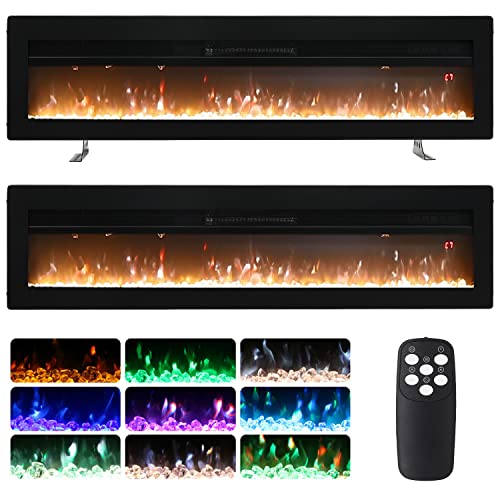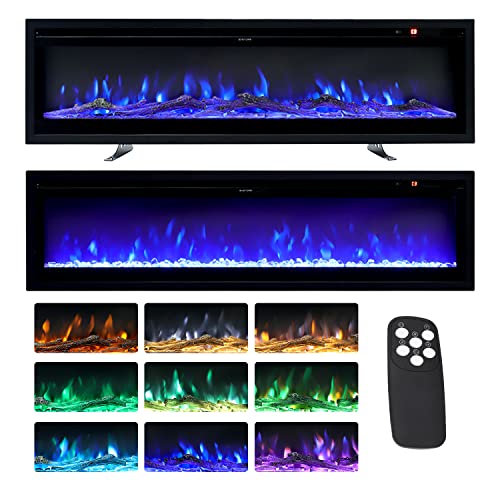Five Killer Quora Answers On Wood Burning Fires
페이지 정보

본문
 Wood Burning Fires Need to Be Hot and Clean
Wood Burning Fires Need to Be Hot and Cleanwood burning fires - http://www.tianxiaputao.com/bbs/Home.Php?mod=space&uid=1027077 - are not only relaxing and captivating, but they're a critical element of our health and well-being. However, they must be hot and clean for them to function properly.
Green, or unseasoned wood is very moist that makes it challenging to ignite and burn effectively. Kiln dried or seasoned wood has a lower moisture content, making it much easier to light and maintain a flame.
Efficient Combustion
A wood fire has to be hot enough to push out moisture and reach temperatures above 540 deg F ( The process of producing heat from secondary combustion begins at 900 degrees F (in ideal conditions). This is the most important step to efficiently burning the fuel and reducing pollutants, smoke, and creosote accumulation in the flue.
It is important to note that the temperature required for secondary combustion varies based on the type of fuel used and the conditions of the environment. Make sure to use firewood that is seasoned and has a less than 20% to limit these variations.
In addition, the quantity of air that is pumped into the fire can have a significant impact on the amount of heat produced and time to burn. The more oxygen that is available, the hotter the fire will burn. A wood fire produces less energy and burn at a slower rate when the air supply is restricted.
To maximize burn time and efficiency to maximize efficiency and burn time, a wood stove fireplace insert should be equipped with an adjustable air damper. The wide-open setting allows the fire to take all the oxygen it needs and quickly drain the fuel supply. A fire that is contained within the confines of a small area is less likely to spread.
A firewood pile that is well-dried is also essential for efficient wood burning. When wood burning stoves near me is freshly cut and hasn't had the chance to dry it will have a high water content, which can be difficult to burn. For the Best wood burning stoves performance, it is recommended that you only use seasoned cast iron wood burning stove that has been stored outdoors for six to nine months.
The BTU content of wood is another factor to take into consideration. White pine and spruce may be less expensive than eastern hardwoods like shagbark and hickory as well as black locust, but their BTU numbers are higher. This means that they'll generate more heat from the same amount of wood. It's important to consider your heating needs and the cost of fuel when selecting your firewood.
Clean Burning
Wood smoke is a source of indoor air pollutants that can irritate the lungs and cause respiratory distress, particularly for seniors and children. These pollutants include volatile organic compounds (VOCs) like formaldehyde and benzene, as well as polycyclic aromatic hydrocarbons, such as benzo-apyrene, can cause cancer. When wood is burned and smolders, volatile tars like creosote are also released.
Smoke from poorly-designed wood stoves and fire places could cause poor air quality outside, making it harder to see and causing photochemical smog. However, new clean burning wood stoves and fireplaces equipped with modern technology for combustion, when properly used, can greatly reduce these emissions.
Stage 1 - Moisture vapourizes: As the log gets heated, it releases water vapor, which escapes through the chimney flue. This requires more energy than if the log was dried prior to burning. This is a waste of energy that could be used to warm your home.
In the flue, the vapors mix with carbon particles and form smoke. Smoke is one of the major contributors to particulate matter in the air and is one of the main sources of smog we encounter on clear days.
 When used correctly Wood stoves and fireplaces using clean burn technology can reduce the problem by converting the logs to charcoal-like states that releases less volatile gasses and releases most of the energy from the log as usable heat.
When used correctly Wood stoves and fireplaces using clean burn technology can reduce the problem by converting the logs to charcoal-like states that releases less volatile gasses and releases most of the energy from the log as usable heat.Avoid using damp, sour or decayed wood to ignite your fire. It's more difficult to burn and generates more creosote. Avoid overburdening the stove with brittle and thin woods such as fir or pine. They require more energy to burn and create more smoke, which can cause chimney fires.
Use a bucket made of metal to scoop up ashes from the stove, and always wait until they cool before handling them. Store or dispose of the ashes properly. They can re-ignite when exposed to water and can be dangerous in landfills. Instead, you should use them around your garden or at the house.
Properly properly storing, seasoning and burning your wood will save you money on fuel and will keep your stove working efficiently. It is also crucial to clean your chimney regularly to remove creosote that has been deposited and particles and also to prevent chimney fires and maintain the safety of the operation.
Safety
It's difficult to beat a warm fire in the winter cold However, safety precautions must be taken. If fires are constructed incorrectly or left unattended, or if they are burned the risk of dangerous fumes entering the home. Creosote may also build up in the chimney. These deposits can clog the flue, block airflow and cause your furnace or wood stove to operate less efficiently.
Do not burn treated or painted garbage in your wood burner-burning stove or fireplace. They emit toxic fumes, such as carbon dioxide, and release toxic gases. Also, do not use the flammable liquids to ignite fires. Kerosene, gasoline and lighter fluids can cause an increase in emissions, produce toxic creosote, and even cause chimney fires.
Keep combustibles, like furniture, curtains and toys, in a safe distance from your stove or fireplace. Don't hang clothes near your fireplace that is wood burning. Make sure your children are aware that the fireplace is extremely hot and should not be touched.
Use only seasoned wood for your stove or fireplace. The wood that is seasoned has been dried out over the summer months to lessen the amount of moisture. Wood that is wet produces more smoke and creosote while seasoned logs burn more efficiently and with less mess. Seasoned wood looks darker and cracks appear in the end grain, and makes a hollow sound when tapped. Keep your logs outside stacked neatly with the top securing and allowing air to circulate around them.
The appliances that are overloaded generate more smoke and less warmth. Fires that are overloaded can also create dangerous levels of carbon monoxide. If you have an older appliance that has a lining made of metal, you should inspect the liner frequently for signs of wear and tear that can cause an explosion in the chimney.
The EPA recommends reducing smoke in your home by using dry, well-seasoned, split and dry wood, and then constructing a warm fire with small pieces. Avoid using softer woods such as pine, which can be a good starter material to get your fire up and running however should not be used for anything more than. These woods with resin and sap, which, when burnt, deposits too much creosote in the chimney.
Maintenance
A warm flame in a wood burning fireplace is a great method to relax during the cold winter nights. It is important to keep your fireplace in good condition to make the most of it. Regular inspections and cleaning of your fireplace will help you to avoid any problems. This prevents the build-up of creosote and keeps the chimney clear for maximum efficiency.
Creosote is a dark and crusty flammable material that forms in the flue when wood doesn't completely burn. When a lot of creosote accumulates, it can lead to chimney fires. These are the second hand wood burner leading cause of fires in homes across the United States. The failure of a fireplace to fully burn is caused by a number of reasons including dampers that aren't properly closed or cracks in the liner of the chimney as well as a lack of regular cleaning and removal of ash.
Creosote can build up excessively when wood isn't properly treated. This is because up to half of the weight of a piece wood is water. During the fire, this water boils and releases heat, but it also consumes energy during the process. The water vapor that is produced then condenses into creosote, or is released into the air as part of smoke.
Soot is a different harmful product of burning wood. Soot is less brittle than creosote, however it can cling to the walls of your fireplace and block air flow. It could also pose an ignition risk since it ignites easily when exposed to combustible gases.
You should remove the ashes and place them in a metal ash bucket that you keep outside on a nonflammable surface. The ashes can also be used as an energy source for plants Don't forget to scatter them across the backyard!
It is recommended to have your fireplace and chimney checked by a Regency Dealer certified. The technician can check for cracks, creosote levels, soot levels as well as a properly shut damper, and the condition of the catalyst. If you have a two-stage fireplace which includes an air tube, the catalyst should be removed and visually checked for obstructions. Refer to your user manual for instructions on how to accomplish this for your particular unit.
- 이전글Title: Advanced Dementia Care Techniques: Enhancing Senior Care for Those with Dementia 24.11.27
- 다음글8 Tips To Boost Your Ignition Lock Repair Near Me Game 24.11.27
댓글목록
등록된 댓글이 없습니다.



















